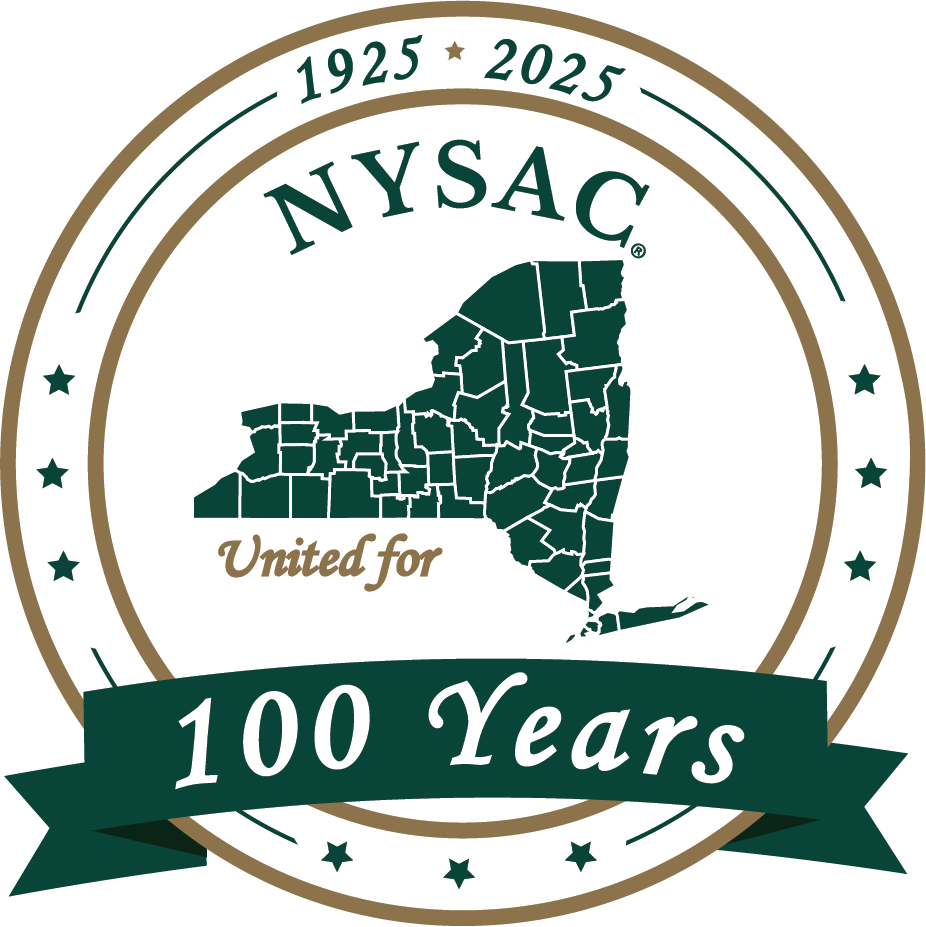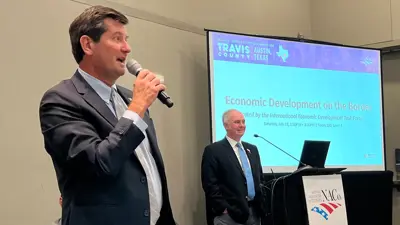A Battle-Tested Ally for Local Governments: the National Association of Counties
By Joe Mahoney
Contributing Author
What happens at the federal government level -- for better or for worse -- often has direct impacts on local governments and the people they represent.
It's a reality that Matthew Veitch, vice chairman of the Saratoga County Board of Supervisors, says plays out regularly, so much so that he has become increasingly active in the National Association of Counties (NACo).
In Washington, NACo functions as the eyes and ears of county governments across the nation. The grassroots organization also seeks to have input with both Congress and the White House by suggesting legislation or weighing in on debates over bills that are of interest to county governments.
"It's important that counties have a seat at the table when it comes to these federal policies," said Veitch, who serves as chair of the Standing Committee on Public Safety for the New York State Association of Counties.
"Almost everything we do at the county level either passes through the federal government or is funded by federal legislation," he added.
As a member-driven organization, NACo's federal agenda is shaped by its members and those who participate in its committees, meetings and conferences.
The organization represents 3,069 county governments nationally as well as some 40,000 county elected officials and 3.6 million county employees.
When county leaders and agency staffers participate in NACo webinars and other activities, they invariably learn new ways to make their own organizations more effective and take home information about available funding streams from the federal government and other sources, said Orange County Legislator Kathy Stegenga.
Serving on a variety of committees with both NACo and NYSAC, Stegenga said, has provided her with opportunities for networking and collaboration that have kept her abreast of emerging trends that could have economic ripple effects in various regions of New York.
"When I go to conferences, I bring a lot of information back to my legislature and back to my departments," she said. When she learns about NACo webinars, she forwards that information to staffers at county agencies, she said.
One county attempting to deal with a federal issue on its own, she said, is unlikely to get very far. But when county officials from all 50 states coalesce, it can move the needle in Washington by prompting the federal bureaucracy to pay attention.
Stegenga said NACo's advocacy helped ensure that a major federal transportation and infrastructure funding bill was designed in a way that funneled the money for projects directly to counties rather than having it pass through state-controlled bureaucracies. That put the decision-making directly in the hands of local leaders rather than state agencies.
"We have to be lobbying, we have to be writing letters and we have to be talking to our representatives because that is the only way we are going to get our needs taken care of," Stegenga said.
In outlining its values, NACo states: "We are steadfast in our shared pursuit to enrich our membership value exponentially, guided by the belief that stronger counties result in a stronger America."
Oswego County Clerk Terry Wilbur, who serves as chair of the NACo Agriculture Committee, said one of the benefits of participating in the national organization is that it has staffers who have contacts at the varied federal agencies and are in position to get those bureaucracies focused on the needs of local officials.
NACo, Wilbur said, is in the process of reviewing federal farm legislation, a major piece of legislation that comes before Congress every five years. "This farm bill is important because it has everything in it from the SNAP program (which provides funding for food stamps) to grant opportunities for water and sewer projects to crop insurance and subsidy programs to support our farmers," he said.
Another example of how NACo's advocacy has yielded dividends is seen in expanded federal resources for plugging coverage gaps in rural broadband and cell phone coverage, Veitch pointed out. He noted one of his Saratoga County colleagues, Hadley Supervisor Mo Wright, brought his concerns to NACo. Wright's recommendations ended up being incorporated in NACo's recommendations to Congress, he noted.
NACo has also provided guidance to local officials for dealing with federal nuclear regulators, a valuable resource for a rural county that is home to the Nine Mile Point Nuclear Station, Wilbur said.
NACo's annual legislative conference wraps up in Washington Tuesday. The event drew nearly 2,000 county elected and appointed officials and provided conference participants with an opportunity to meet various members of the 118th Congress and discuss the legislation that is being closely monitored by county leaders.
Veitch, Stegenga and WIlbur all attended the conference.
Contact Us
New York State Association of Counties
515 Broadway, Suite 402
Albany, NY 12207
Phone: (518) 465-1473
Fax: (518) 465-0506

